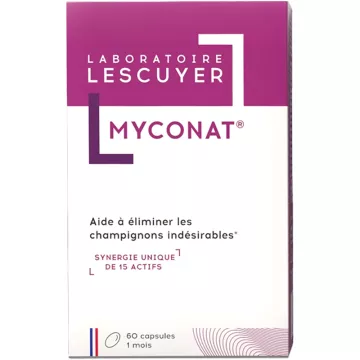


What is fungus and how does it develop?
Mycoses are fungal infections caused by microscopic fungi that invade tissues and can trigger a variety of symptoms. These infections can affect various parts of the body, including the skin, nails and mucous membranes. The development of these fungal affections is favored by warm, humid environments, which explains their increased frequency in areas such as the feet, armpits and genitals.
What are the most common types of mycosis?
There are several types of mycosis, each targeting different parts of the body. Among the most common are :
How to prevent fungal infections?
Preventing fungal infections means maintaining rigorous personal hygiene and minimizing exposure to conditions that are conducive to the proliferation of fungi. Here are a few practical tips:
What treatments are available for fungal infections?
Treatment of fungal infections varies according to location and severity. Topical treatments, such as antifungal creams or sprays, are often used for superficial infections. For more severe or resistant cases, oral medication may be prescribed by a physician. It's crucial to follow the treatment to its prescribed end, even if symptoms disappear sooner, to avoid a recurrence.
When should I consult a doctor about mycosis?
It is advisable to consult a healthcare professional if:
What are the main causes of skin mycoses?
Skin mycoses are mainly caused by three types of fungi: dermatophytes, yeasts and molds. Factors favoring their development include high humidity, direct contact with contaminated objects or surfaces, and weakened immunity. Keeping skin clean and dry is essential to prevent their appearance.
How can I distinguish mycosis from other skin conditions?
Differentiating mycosis from other skin conditions can be complex without the advice of a healthcare professional. However, fungal infections are often characterized by red lesions with clearer borders, scaling of the skin, and sometimes itching or burning. Rashes caused by allergic reactions or autoimmune diseases may present similar symptoms, but are usually treated differently.
Are fungal infections contagious?
Yes, fungal infections can be highly contagious. They are transmitted by direct contact with infected skin or indirectly via contaminated surfaces such as public shower floors, gym mats or shared shoes. It's important to adopt strict hygiene measures in public places, and to treat any infection promptly to limit its spread.
What are the signs of vaginal mycosis and how can it be treated?
Vaginal mycosis is characterized by intense itching, thick white discharge and sometimes a burning sensation during urination or intercourse. Standard treatment includes antifungal creams, tablets or vaginal suppositories. It's also advisable to wear cotton undergarments and avoid douching, which can unbalance the natural flora.
Are there any natural remedies for fungal infections?
Some natural approaches can help complete the treatment of fungal infections, although they do not replace professionally prescribed antifungal agents. Among these remedies, coconutoil, known for its antifungal properties, can be applied locally to affected areas. Diluted cider vinegar is also used as a footbath to treat athlete's foot. However, it is essential to consult a doctor before starting any alternative treatment to ensure it is appropriate and safe.